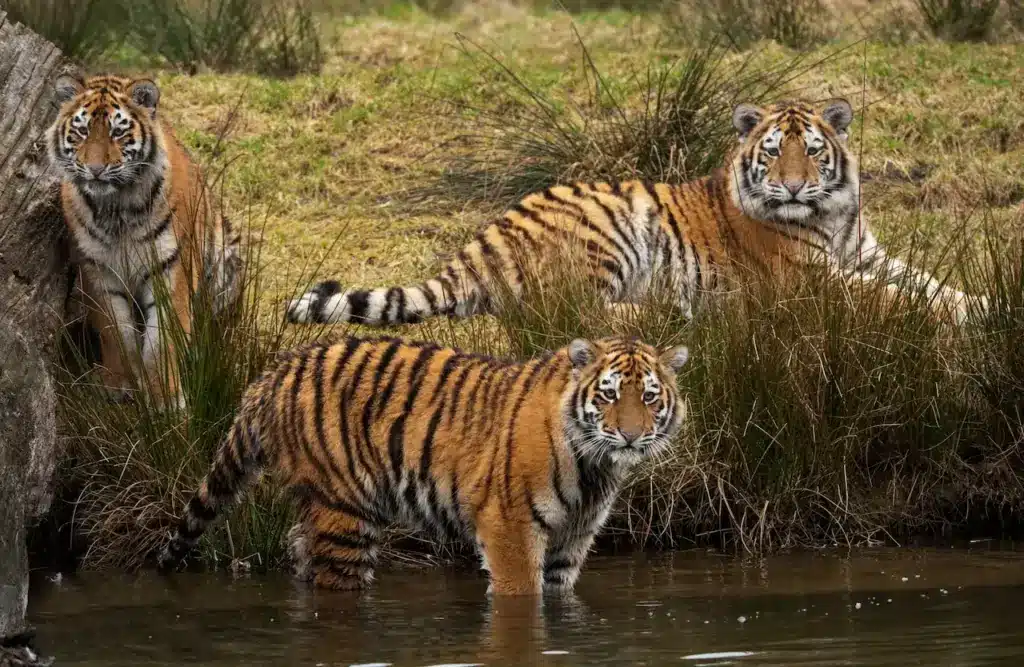Siberian Tiger Saved From Extinction
An Endangered Species Success Story: Siberian Tiger Kept From Going Extinct
Strange and marvelous to think about is the fact that, while the cave lion, the saber-tooth tiger and many other species of predatory cat long ago passed on into paleontolological pre-history, the largest feline-family member that ever walked earth—the Amur, or Siberian, tiger—is still with us today. But that’s not to say that this massive, magnificent, snow-loving stalker of the Russian Far East has not used up at least eight of its nine lives.
[ez-toc]

In fact, at the turn of the twentieth century, there were two species of giant tiger—weighing up to 650 pounds, or 300 kilos—roaming some of the colder climes of Asia: the Amur tiger in the east, and its close cousin, the Caspian tiger, in the west. Both suffered relentless persecution at the hands of humans with firearms, who coveted their beautiful hides and also viewed them as potential killers of livestock. The Caspian cat, which had the misfortune of living closer than its cousin to dense populations of humans, is now extinct, the last one having been seen in the 1950s.
The Siberian tiger, meanwhile, whose native range extends along a narrow band of remote and icy Far Eastern Russia, China and Korea, was faring only a bit better until very recently. By the 1930s the Amur tiger’s population had dwindled to fewer than 40 harried individuals—and still it was being hunted. Finally, in 1947, the Soviet (now Russian) government realized that these animals were an international treasure, and banned the killing of them.
Like virtually all cats, tigers breed quickly when they have suitable food and habitat, and when they are not being killed faster than they can reproduce. While there have been no sightings of Amur tigers in Korea and China for many years, just recently the Russian tiger population was reported at between 450 and 500, which is a huge conservation success story by almost any measure.
Unfortunately, in the wildlife conservation world, success can be fleeting. One problem Siberian tigers face is that, because the current population is derived from just a few dozen individuals that survived the human depredations of the first half of the twentieth century, scientists fear the tigers lack sufficient genetic diversity. This means that all of today’s wild Amur tigers may be so genetically similar to one another—as close as siblings, or even twins—that, among other problems, an illness capable of killing one of them would likely also be able to kill all of them, because of the fact that their immune systems have the same weaknesses.

Siberian tigers have also been losing habitat to increasing human activity—primarily logging and road-building—as well as to changes brought about by global warming. Drier, hotter conditions, along with frequent, devastating forest fires, have been a major effect of climate change on tiger habitat.
But by far the biggest threat to Amur tigers has been the recent, dramatic upsurge in illegal hunting. Nearby China is the world’s largest and most voracious market for tiger body-parts, which are used to make expensive folk medicines. Tigers are so valuable in this illegal market that it has become worth almost any risk for poachers in Russia to try to kill one. Photo Credit: S. Taheri
BACK TO THE MAIN ARTICLE ON ANIMALS SAVED FROM EXTINCTION


